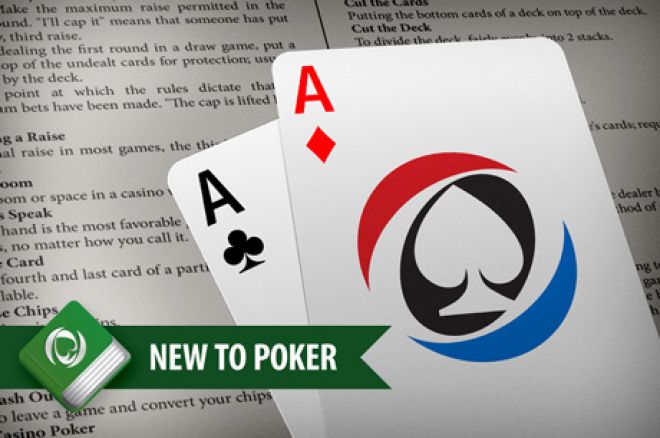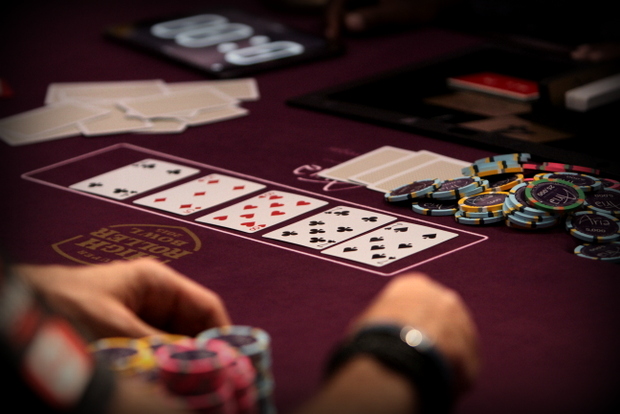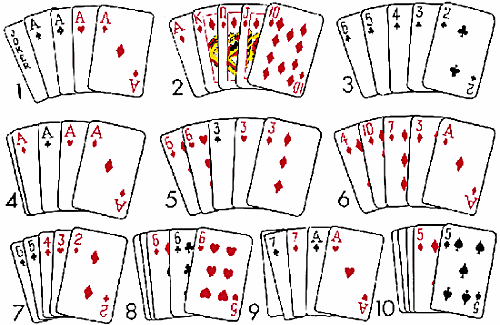Poker Raise Meaning
This time the raise amount is more than half of the minimum, so the dealer announces that this is a raise, but the player must make a full raise of 800 total' pretty much every casino/card room I play in would actually define this as a call, not a raise; under the 'single Chip' ruling.
In poker there are only five different betting actions to remember, depending on whether or not anyone has already made a bet on this round. Let's start with your options when someone has already placed a bet (known as opening the betting).
- (Poker Site Icon) Description: The icon for the site at which the player played the hands. If this stat is added to a report it will break the report into a line for each site. Steal Raise: A steal raise is an open raise by the cutoff, button, or small blind. There has been no action and the cutoff, button or small blind opens the pot.
- Reraise definition is - to raise (something or someone) again: such as. How to use reraise in a sentence.
If you do not like your hand you can fold, relinquishing your cards and taking no further part in the hand. Any money that you have already contributed to the pot is lost. Once you have folded your hand it is placed in a pile of other discarded hands (known as the muck) by the dealer. Having touched the muck, your hand is now dead. It cannot be retrieved even if you were to realise that your hand had been discarded by accident.
However, let's assume that you do want to continue in the hand after someone else has bet. In that case you may either call or raise. A call involves matching the amount already bet in order to see the next card (or to see the showdown, if the last card dealt was the river card). However, if you particularly like your hand you may also raise, forcing the original bettor to match your raise if he wants to continue in the hand.
Of course, whenever you raise, the original bettor has the option to reraise, putting the onus back on you to match his bet to stay in the hand. Most cardrooms have a limit on the number of bets and raises allowed. Usually only a bet and three raises (or four raises) are allowed on each round of betting. However, when there are only two players left in the hand some cardrooms allow unlimited bets and raises.
When there has not yet been any betting on this round, you have the option of either betting or checking. If you like your hand (or choose to bluff) and decide to bet out, you simply place your bet in front of you towards the centre of the table. The other players must now at least match your bet if they want to remain in the hand.

If you instead decide to check, you are deferring your betting rights for the time being. Another player may now bet, in which case you may fold your hand, call the bet or raise (the action of first checking and then raising when an opponent bets is known as a check-raise). If no-one bets on that round then the next card is dealt and again the first player has a choice whether to bet or check.
Raise In Poker Meaning
Raise - To increase the amount of the bet.When you are facing a bet from another player, you will typically have the option to fold, call, or raise. If you “fold” it means that you throw your hand away and concede the pot to the other players who remain in the hand. This is your best option if you do not want to match the wager your opponent has bet. If you “call” it means you match the wager that your opponent bet. This gives you the right to proceed in the hand. If you raise, it means you increase the current wager by an amount that constitutes a legal raise, as defined by house rules. House rules regarding raising can vary from poker room to poker room. Rules pertaining to raising also differ between games with structured betting and those with unstructured betting.
Poker Raise Meaning
In a Limit Holdem Game, the betting is structured. This means that the size of the bets and raises on each betting round are dictated by the stakes of the game. For example a $3/$6 Limit Hold’em game would have a $3 small bet and a $6 big bet, and bets and raises would be required to be in exactly those amounts. In No-Limit and Pot Limit Hold’em, the betting is unstructured. This means that in No-Limit play, a player may bet any amount equal to or greater than the minimum established wager, up to their entire stack, and in Pot-Limit play, a player may bet any amount equal to or greater than the minimum established wager, up to the size of the pot. In these games, the minimum wager is established by the amount of the big blind. This remains the minimum wager throughout the hand until a player increases it.
Rules regarding raising can get a little tricky, especially for games with unstructured betting. In most poker rooms, the raise rule for No-Limit and Pot-Limit play would be phrased something like “In order to constitute a legal raise, the increase in the wager must be equal to or greater than the amount of the previous bet or raise.” The problem is that the “previous bet or raise” amount may only be a part of the wager you are currently facing. That is because the “previous bet or raise” amount is only the amount added to the current wager by the last player to bet or raise. If there was no previous action on a betting round, then a player’s bet will establish the minimum wager for that betting round, an be the entire amount of the current wager. Often, this will not be the case, and the current wager will also include blind bets or earlier action from the same betting round. In the traditional raise rule, the minimum raise requirement is based only on the action of the last player to bet or raise.
Poker Raise Meaning
Consider the following, in a $5/$10 blind No-Limit Hold’em game, a player raises to $20 before the flop. This constitutes a legal raise because the increase is “equal to or greater than the amount of the previous bet or raise.” In this case, the previous bet or raise was the $10 blind bet. In order to make a legal raise, the raise had to increase the wager by at least the amount established by the big blind, or $10. Our player’s raise to $20 consists of a $10 call and a $10 raise, which constitutes a legal raise. Now, the total amount of the current wager is $20, but the previous player only raised $10. In this situation, the amount of the minimum established wager has not been changed, it remains at $10. Under the traditional raise rule, if a third player wanted to reraise, they would have to increase the wager by at least the minimum established amount, or $10. If our third player wanted to reraise the minimum amount, he would make it $30 to go, which would consist of a $20 call and a $10 raise. But, the game is No-Limit, and our third player elects to raise more than the minimum. He makes it $40 to go, which can be broken down into a $20 call and a $20 raise. The rules of No-Limit Hold’em state that the minimum bet amount, once established for a particular betting round, cannot be regressive. In other words, the minimum bet for any particular betting round can only stay the same or increase, it can never decrease. When our third player made it $40 to go, his $20 raise increased the minimum wager from $10 to $20. This means that if the initial raiser wanted to reraise when the action got back to him, he would have to make it a minimum of $60 to go, consisting of a $40 call and a $20 raise. Of course, that would be the minimum reraise, but since we are playing No-Limit, he could theoretically bet up to his entire stack. On subsequent betting rounds, the minimum wager reverts back to its initial amount of $10, as established by the size of the big blind. Increases to the minimum wager do not carry over from betting round to betting round.

Since this can all be a little confusing, some clubs have implemented a simplified raising rule that states that a legal raise must be “equal to or greater than the entire amount of the current wager.” With the simplified raise rule, the amount that the previous actor bet or raised is irrelevant. Here, the minimum wager is set at the entire amount of the current wager, including all prior action. This is done for simplicity’s sake, so that the current wager need not be broken down into a call amount and a raise amount. Consider the previous situation where we were playing $5/$10 blind No-Limit Holdem, and a player raised and made it $20 to go. Under the simplified raise rule, the minimum wager is now established at $20, the amount of the current wager. In this situation, if our third player wanted to raise, he would have to make it a minimum of $40 to go, because he would have to at least double the current wager, whereas with the other, more traditional raise rule, he could have made it a minimum of $30. With the simplified raise rule, if the initial player wanted to reraise the $40, he would have to make it a minimum of $80 to go. You can see that with this simplified raise rule, the minimum wager will tend to increase more often than with the tradition raise rule we discussed previously. Many poker purists consider this simplified raise rule a bastardization of the rules of play, and dislike it intensely.


What You Raise In Poker
 Usage: Raise it Up, I Raise, Check Raise, Check Raised, Raised Preflop
Usage: Raise it Up, I Raise, Check Raise, Check Raised, Raised PreflopPrevious Poker Term: Rainbow